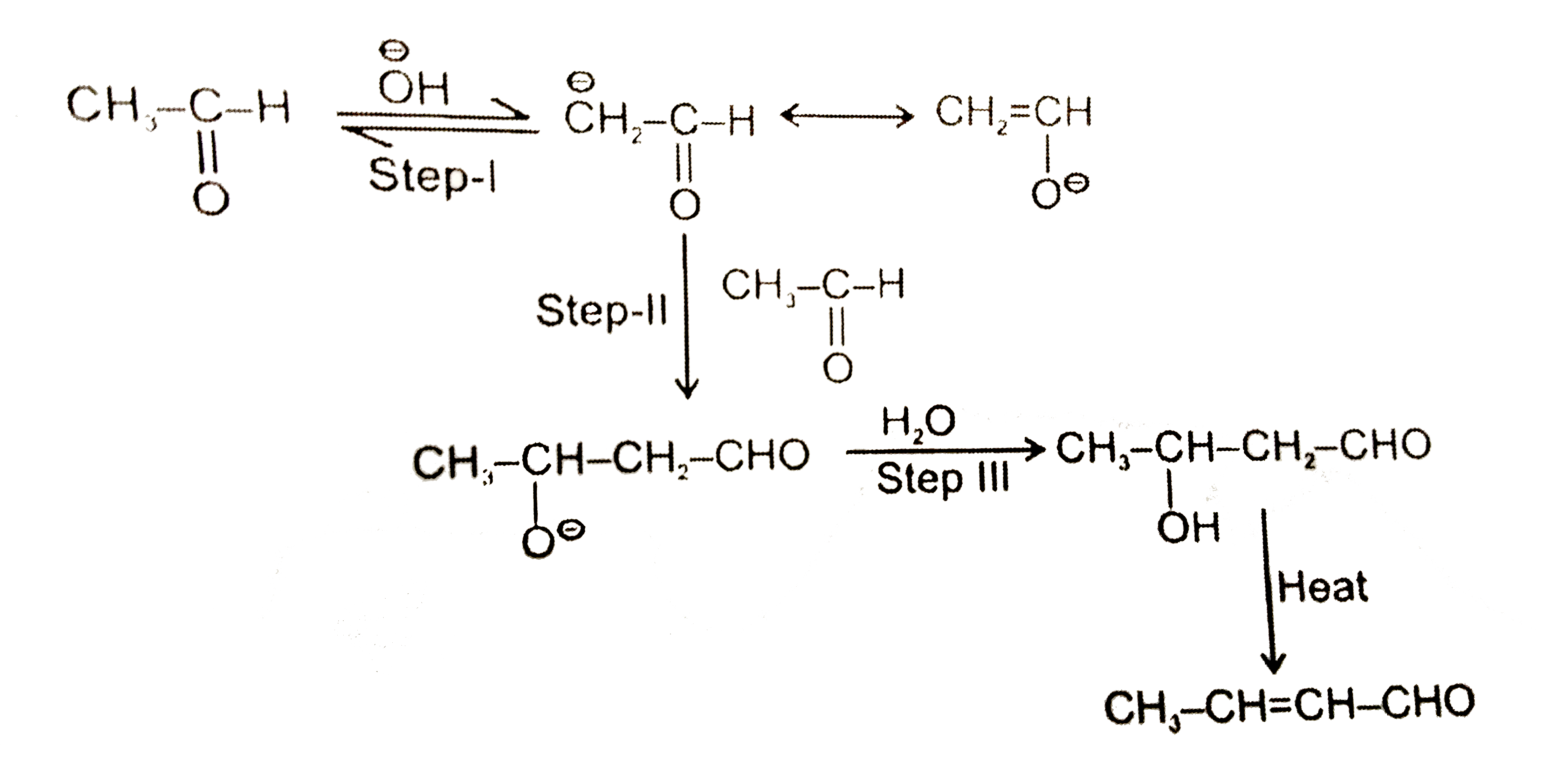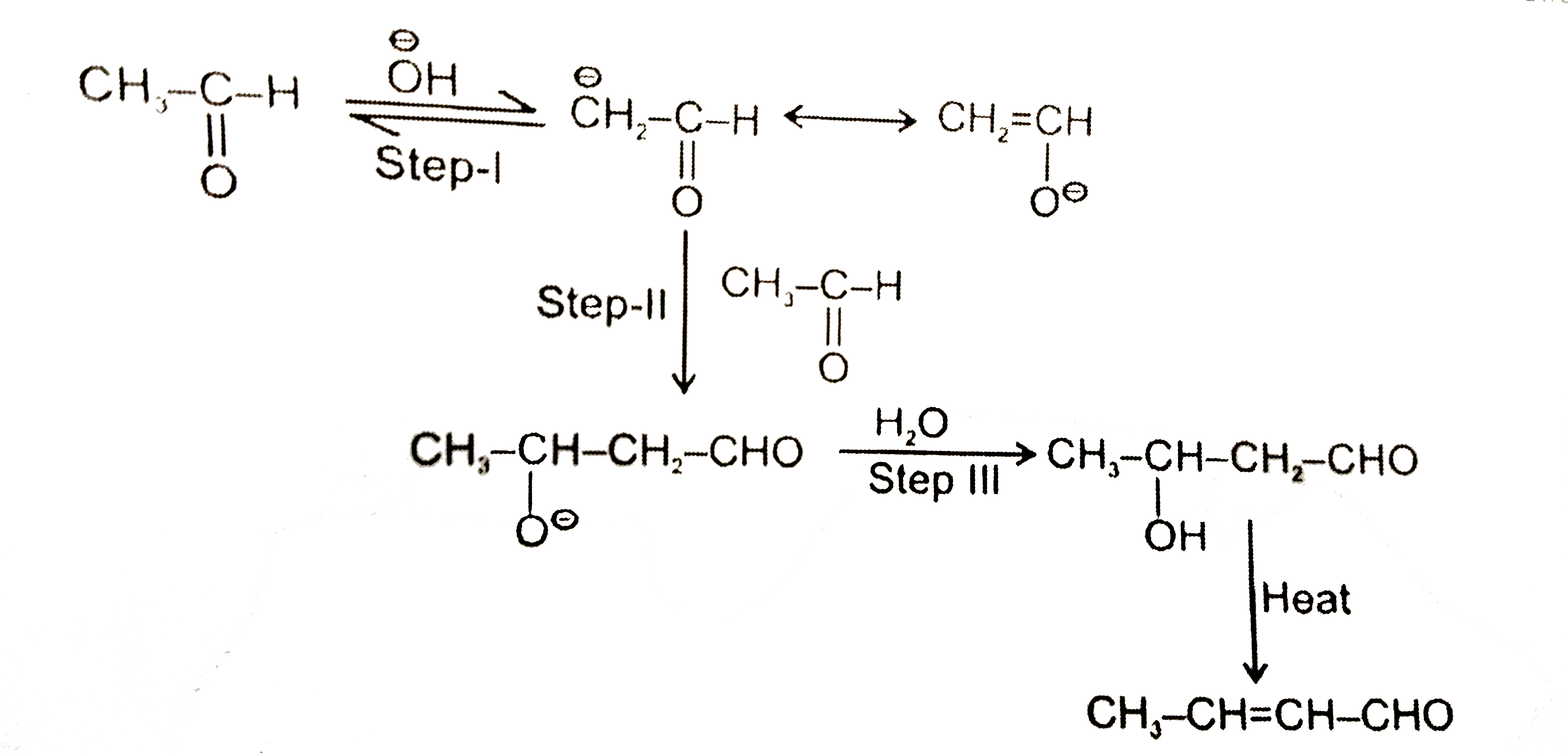Self-condensation of two moles of ethyl acetate in presence of sodium ethoxide yields
ethyl butyrate
acetoacetic ester
methyl acetoacetate
ethyl propionate
The correct Answer is:B
To solve the problem of what is produced from the self-condensation of two moles of ethyl acetate in the presence of sodium ethoxide, we can follow these steps:
Step 1: Understand the Reactants
- Ethyl acetate (C2H5COOCH3) is an ester and can undergo self-condensation.
- Sodium ethoxide (C2H5ONa) acts as a base and facilitates the condensation reaction.
Step 2: Set Up the Reaction
- When two moles of ethyl acetate react in the presence of sodium ethoxide, they undergo a reaction known as "glycine condensation" or "crossed aldol condensation."
Step 3: Mechanism of the Reaction
1. Deprotonation: Sodium ethoxide will deprotonate one of the ethyl acetate molecules, generating an enolate ion.
2. Nucleophilic Attack: The enolate ion then attacks the carbonyl carbon of the second ethyl acetate molecule.
3. Formation of β-keto ester: This results in the formation of a β-keto ester, specifically acetoacetic ester (CH3COCH2COOC2H5).
Step 4: Identify the Product
- The product of this self-condensation reaction is acetoacetic ester, which has the structure CH3COCH2COOC2H5.
Step 5: Conclusion
- Therefore, the final product of the self-condensation of two moles of ethyl acetate in the presence of sodium ethoxide is acetoacetic ester.
Answer
The self-condensation of two moles of ethyl acetate in the presence of sodium ethoxide yields acetoacetic ester.
---
- Ethyl acetate (C2H5COOCH3) is an ester and can undergo self-condensation.
- Sodium ethoxide (C2H5ONa) acts as a base and facilitates the condensation reaction.
- When two moles of ethyl acetate react in the presence of sodium ethoxide, they undergo a reaction known as "glycine condensation" or "crossed aldol condensation."
1. Deprotonation: Sodium ethoxide will deprotonate one of the ethyl acetate molecules, generating an enolate ion.
2. Nucleophilic Attack: The enolate ion then attacks the carbonyl carbon of the second ethyl acetate molecule.
3. Formation of β-keto ester: This results in the formation of a β-keto ester, specifically acetoacetic ester (CH3COCH2COOC2H5).
- The product of this self-condensation reaction is acetoacetic ester, which has the structure CH3COCH2COOC2H5.
- Therefore, the final product of the self-condensation of two moles of ethyl acetate in the presence of sodium ethoxide is acetoacetic ester.
The self-condensation of two moles of ethyl acetate in the presence of sodium ethoxide yields acetoacetic ester.
Similar Questions
Write the chemical eqution to show what happens when 'Ethyl acetate is treated with sodium ethoxide in ethanol and the reaction mixture is acidified'.
View SolutionThe rate constant for the hydrolyiss of ethyl acetate in the presence of 0.1N acid (A) was found to be 5.4×105s−1 and for the hydrolyiss of ethyl acetate in the presence of 0.1N acid (B) , it was 6.2×10−5s−1. form these observations, one may conclude that
View SolutionAssertion (A): Hydrolyiss of ethyl acetate in the presence of acid is a reaction of first order whereas in the presence of alkali, it is a reaction of second order.
Reason (R ): Acid acts as catalyst only whereas alkali act as one of the reactant.
View SolutionTwo mole of an ester (A) are condensed in presence of sodium ethoxide to give a β−keto ester (B) and ethanol. On heating in an acidic solution (B) gives ethanol and β−keto acid (C). On decarboxylation (C) give 3-pentanone.
Identify (A),(B) and (C).
View SolutionEthyl chloride on reaction with chlorobenzene in presence of Sodium and ether gives:
View SolutionIn esterification reaction of ethyl alcohol with acetic acid in presence of dry HCl gas
View SolutionThe condensation reacton between one equivalent of acetone and two equivalents of benzaldehyde in presence of dilute alkali leads to the formation of
View SolutionCarbonyl compound which contains α−H gives aldol condenation reaction in presence of alkaline medium. The reaction between two molecules of acetaldehyde take placeas follows in presence of base

Aldol condensation reaction is given by
View SolutionAn organic compound A on heating with concentrated H2SO4 forms a compound B which on addition of one mole of hydrogen in presence of Ni forms a compounds C. One mole od compound C on combustion form two moles of CO2 and three moles of H2O. Identify the compounds A,B and C write the chemical equation of the reactions involved.
View SolutionCarbonyl compound which contains α−H gives aldol condenation reaction in presence of alkaline medium. The reaction between two molecules of acetaldehyde take placeas follows in presence of base

Intramolecular aldol condensation reaction is given by
View Solution
